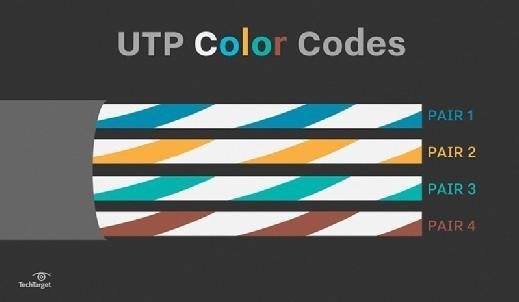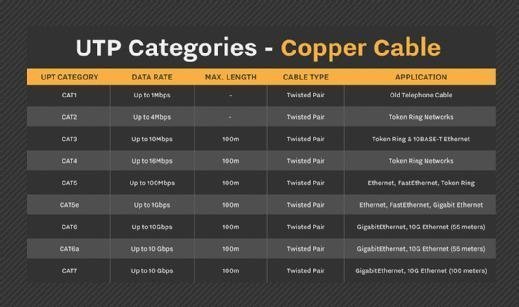What is an unshielded twisted pair (UTP)?
Unshielded twisted pair (UTP) is a ubiquitous type of copper cabling used in networking technologies, such as telephone wiring and local area networks (LANs). Different uses, such as analog, digital and Ethernet, require different pair multiples.
Alternatives to UTP cable include coaxial and fiber optic cables. Each type of cabling has benefits and tradeoffs, but enterprises typically favor UTP cable due to its low cost and easy installation.
Alexander Graham Bell invented the twisted-pair design in 1881.
How UTP cables work: Twisted pair design
Up to four twisted pairs of copper wires are enclosed in a protective plastic cover inside a UTP cable. The greater the number of pairs, the more bandwidth available. The two individual wires in a single pair twist around each other, followed by each pair twisting around each other as well. This reduces crosstalk and electromagnetic interference, both of which degrade network performance. Each signal on a twisted pair requires both wires.
Twisted pairs are color-coded to make it easy to identify each pair. In North America, one wire in a pair is identified by one of five colors: blue, orange, green, brown or gray. Most cables use the first four colors, and the wires are typically solid-colored.
The solid-colored wire is paired with a wire from a different color group: white, red, black, yellow or violet. Typically, this second wire is striped with the color of its mate so that they can be easily identified and matched. For example, a solid blue wire would be paired with a white-and-blue striped wire.

Types of UTP cables
The TIA/EIA-568 standard defines the categories of UTP cables. Each type begins with the prefix CAT -- as in category -- and supports a different amount of bandwidth.
- CAT3. Rarely used today, CAT3 is usually deployed in phone lines. It supports 10 megabits per second (Mbps) for up to 100 meters.
- CAT4. Typically used in token ring networks, CAT4 supports 16 Mbps for up to 100 meters.
- CAT5. Used in Ethernet-based LANs, CAT5 contains two twisted pairs. It supports 100 Mbps for up to 100 meters.
- CAT5e. Used in Ethernet-based LANs, CAT5e contains four twisted pairs. It supports 1 gigabit per second (Gbps) for 100 meters.
- CAT6. Used in Ethernet-based LANs and data center networks, CAT6 contains four tightly wound twisted pairs. It supports 1 Gbps for up to 100 meters and 10 Gbps for up to 50 meters.
- CAT6a. Used in high-speed Ethernet-based enterprise networks, CAT6a is an augmented version of CAT6. It supports greater bandwidth.

Shielded vs. unshielded twisted pair cables
The word unshielded in UTP refers to the lack of metallic shielding around the copper wires. By its nature, the twisted-pair design minimizes electromagnetic interference by providing balanced signal transmission, making a physical shield unnecessary.
Different twist rates -- the varying number of twists between different pairs -- also reduce crosstalk. These protections come from how the wires are physically laid out, so bending or stretching a UTP cable too much can damage the pairs and make interference more likely to occur.
In a shielded twisted pair (STP), a shield encloses the wires and functions as a grounding mechanism to protect people and equipment from the dangers of high voltage and shock. This provides greater protection from electromagnetic and radio frequency interference. However, an STP cable is more expensive and difficult to install than a UTP cable.






